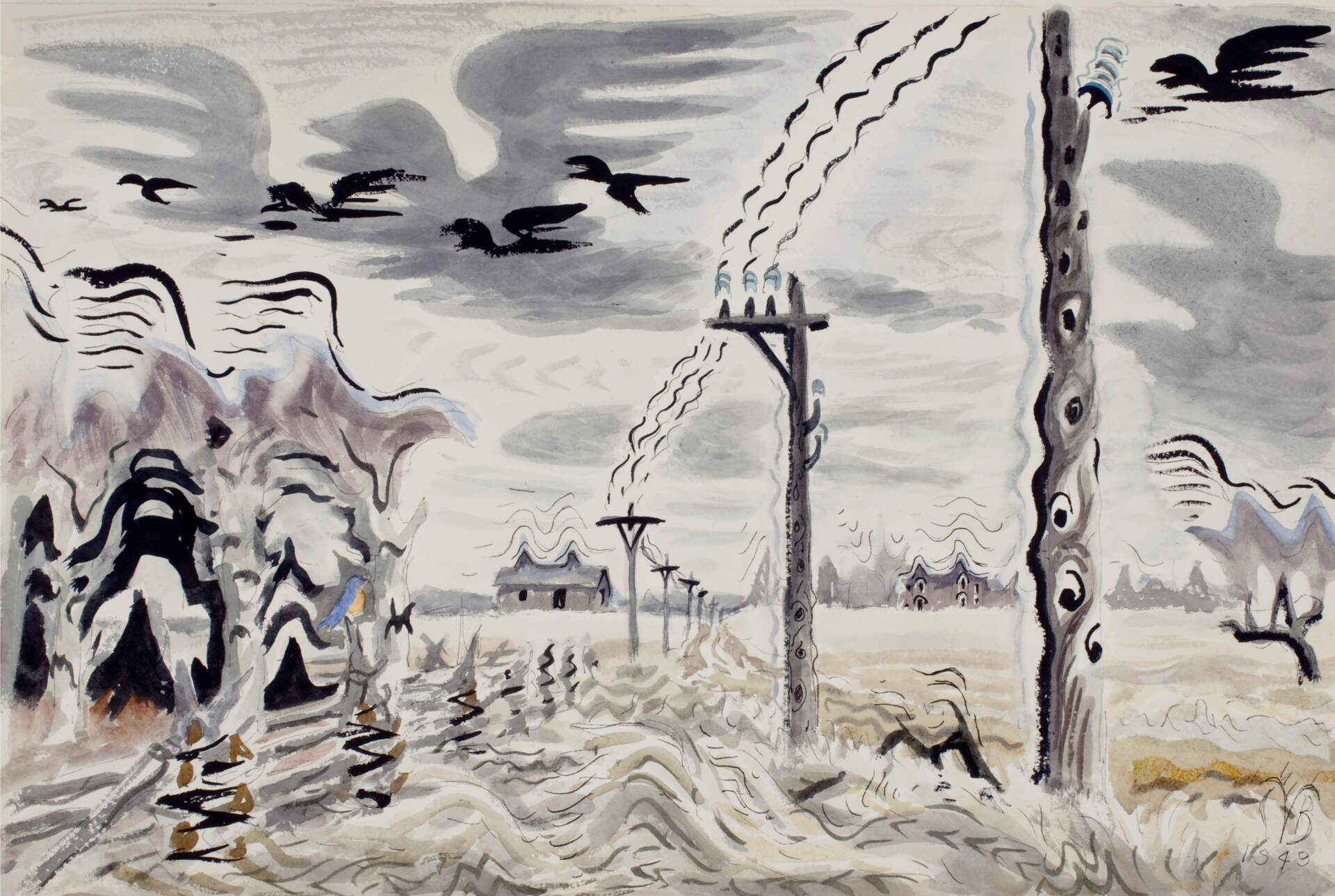Charles E. Burchfield (1893-1967)Telegraph Music
1949
watercolor and ink on paper
11 5/8 x 17 5/8 inches
Burchfield Penney Art Center, Gift of Charles Rand Penney, 1994
From 1948 to 1952, Burchfield worked on incorporating his small 1917 watercolor Telegraph Music into a much larger composition. He made dozens of studies for the new work that featured audio-cryptograms, his unique stylized patterns for specific sounds such as a wind harp, its strummed wires reverberating through the air, setting into motion sound waves that vibrate through wooden telegraph poles. These are joined by echoing crow caws, wind-whipped clouds, and other vibrations and animated landscape elements that contrast with a calm bluebird resting on a fencepost bordering “lynx woods”. He kept the same title, Telegraph Music, for this 1949 watercolor study for his new vision, while the original became the central element of Song of the Telegraph, which hecompleted in 1952. Reflecting on his principle concept in 1963, he wrote: “There are few sounds that are as wild and elemental as the ‘music’ of the telegraph wires that stir the blood as much, and fill the listener, boy or man, with such vague but intense yearning for he knows not what.”
Content by Nancy Weekly
